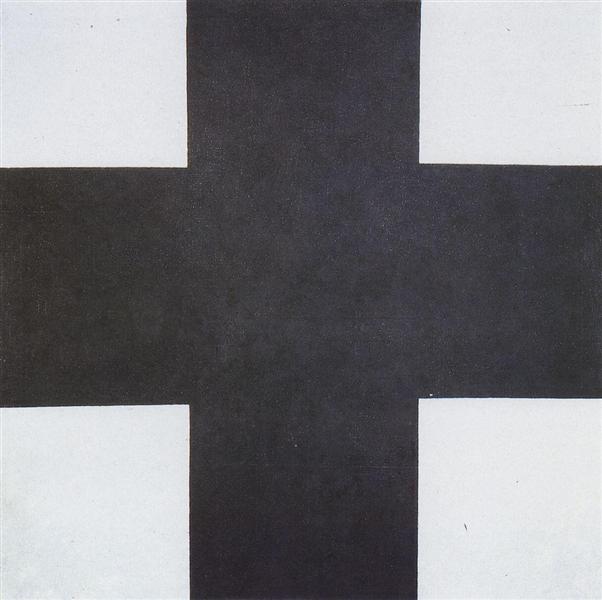Description
In the vast universe of contemporary art, few works manage to condense the spirit of an era and the aesthetic creed of its creator with the clarity and forcefulness that we find in "Cruz Negra" of 1923, the work of the visionary Russian painter Kazimir Malevich. This, emblematic piece of suprematism, is an austere and powerful manifestation of Malevich's incessant search for transcending physical reality and achieving a purity of shapes and colors.
The "black cross" unfolds before us with a monumental simplicity: a black cross with robust and forceful arms that extends on a white background. The juxtaposition of these two colors, black and white, uses the strongest of contrasts to eliminate any visual distraction and submerge the viewer in a direct and primary experience. This chromatic decision reflects Malevich's intention to strip the art of everything superfluous and access its most naked essence. Instead of figurative representations or narrative landscapes, what we have here is a philosophical and metaphysical intention, where the black color, in its absolute density, can be interpreted as the representation of the cosmos itself, or even of the emptiness that transcends all materiality.
The composition of the "black cross" is equally crucial. The central cross, with its perfectly balanced horizontal and vertical lines, creates a stability and symmetry structure that invites the viewer to penetrate its mystery. Each arm of the cross is of equal dimension, which provides a sensation of harmony and geometric order. This perfect balance is a visual representation of suprematist thought, which postulated the supremacy of pure sensitivity in art.
Malevich, who founded suprematism, believed that art should be free from the loads of the material world and transcend towards a superior kingdom of spirituality and pure emotion. In his words, artistic should be "absolute freedom." The "black cross" is a paradigmatic example of this philosophy, because it does not allude to any concrete reference of the real world; It is, in its entirety, an abstract concept. The work, lacking human figures or narrative details, challenges the viewer to find meaning in the interaction of form and color, in contrast and symmetry.
It is crucial to place this work in the broadest context of the artistic development of Malevich. From his first figurative works, through the creation of "Black Square" in 1915, Malevich gradually perfects his visual language towards absolute abstraction. "Cruz Negra" can be considered a continuation and deepening of its emblematic "Square Black", both symbols of their rejection of traditional art conventions and their exploration of new aesthetic horizons.
Malevich's contribution to the art of the twentieth century cannot be underestimated. His work, including the "black cross", has deeply influenced movements and later artists, from Russian constructivism to Western minimalism. Each piece, with its disturbing simplicity and thoughtful composition, invites us to a deep reflection on the role of art and its ability to invoke the transcendent.
In sum, "Cruz Negra - 1923" by Kazimir Malevich is not just an artistic representation; It is a philosophical statement and a meditation on the very essence of artistic creation. Through a limited palette and an elementary geometric form, Malevich points to a path to intuition and spirituality, raising art to a sublime state, released from any earthly interpretation and left to pure contemplation.
KUADROS ©, a famous paint on your wall.
Hand-made oil painting reproductions, with the quality of professional artists and the distinctive seal of KUADROS ©.
Art reproduction service with satisfaction guarantee. If you are not completely satisfied with the replica of your painting, we refund your money 100%.

